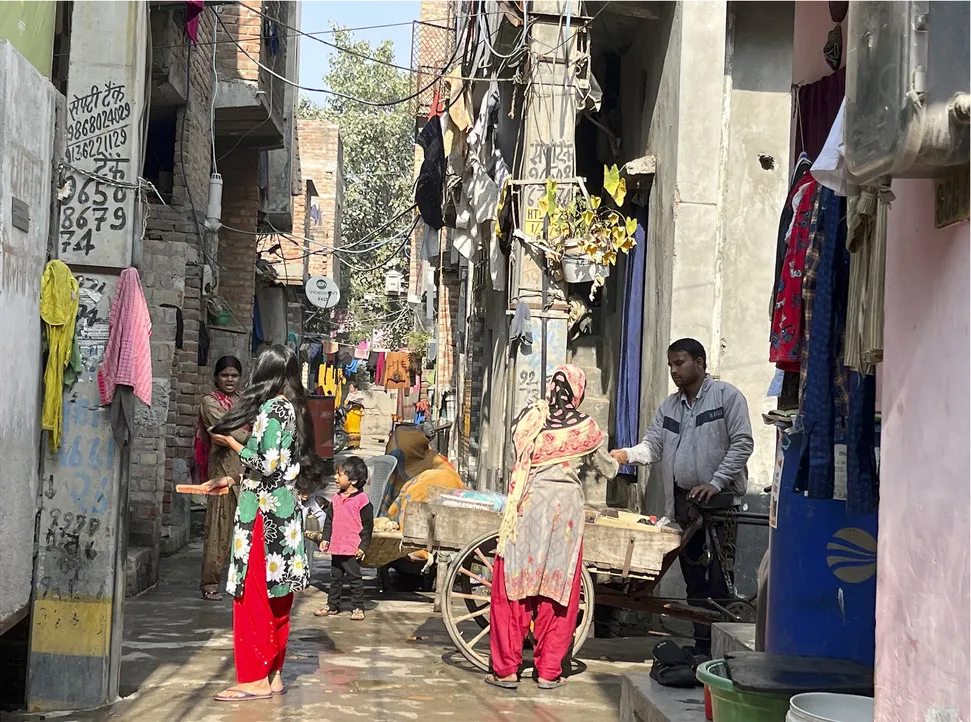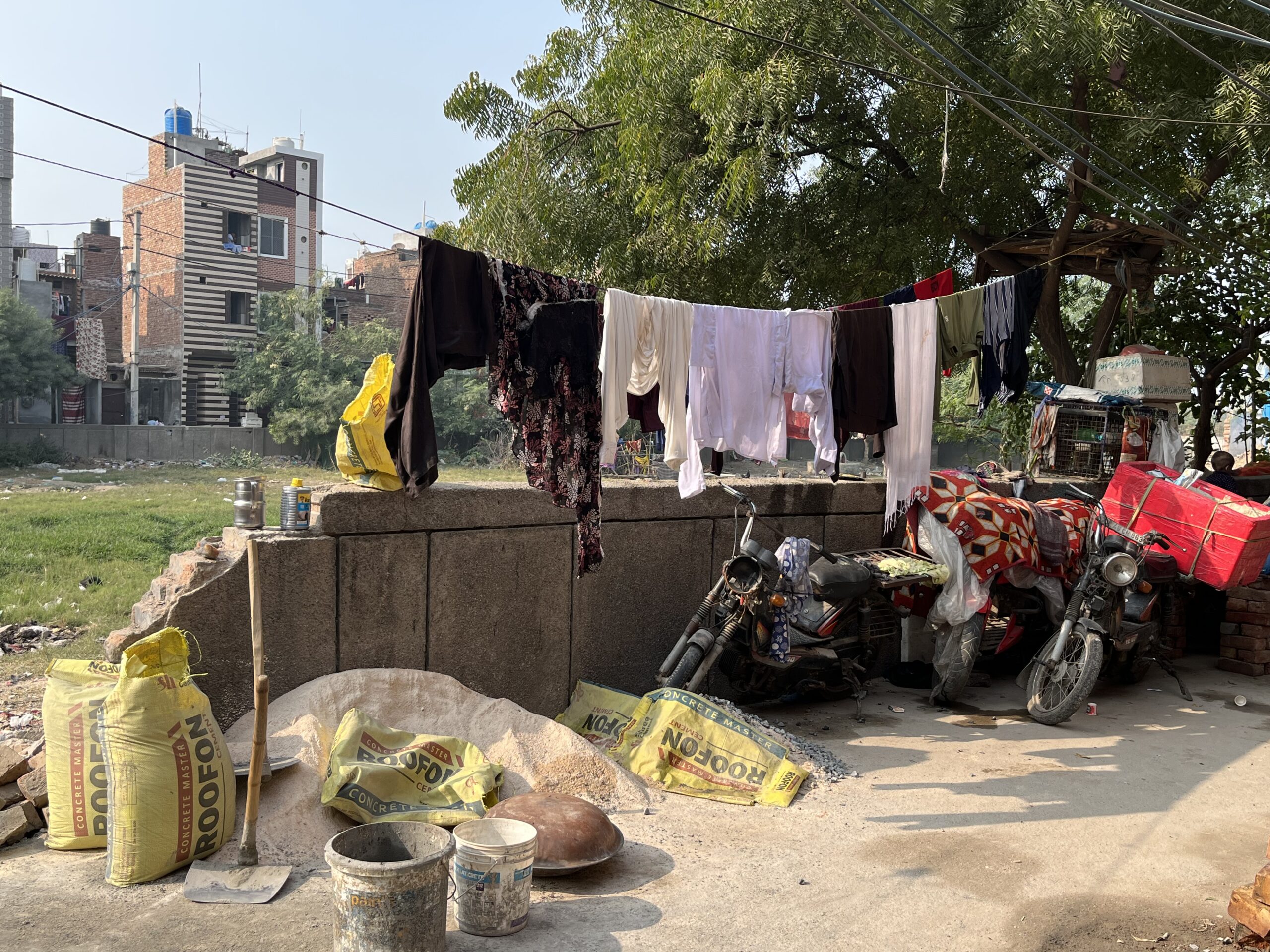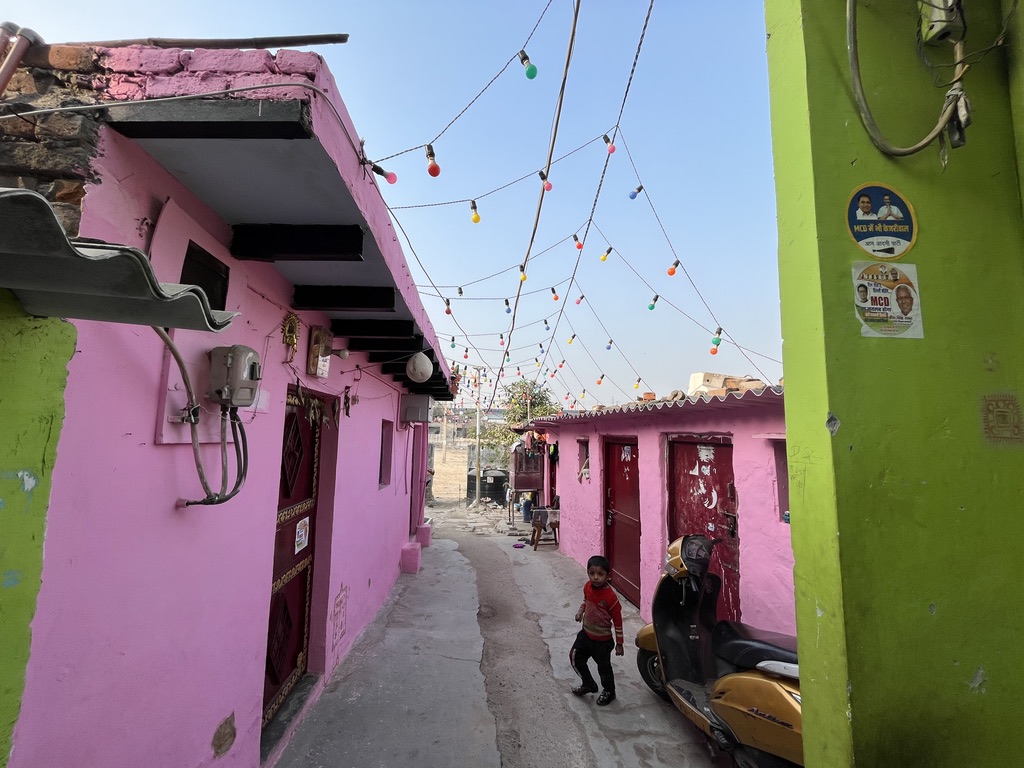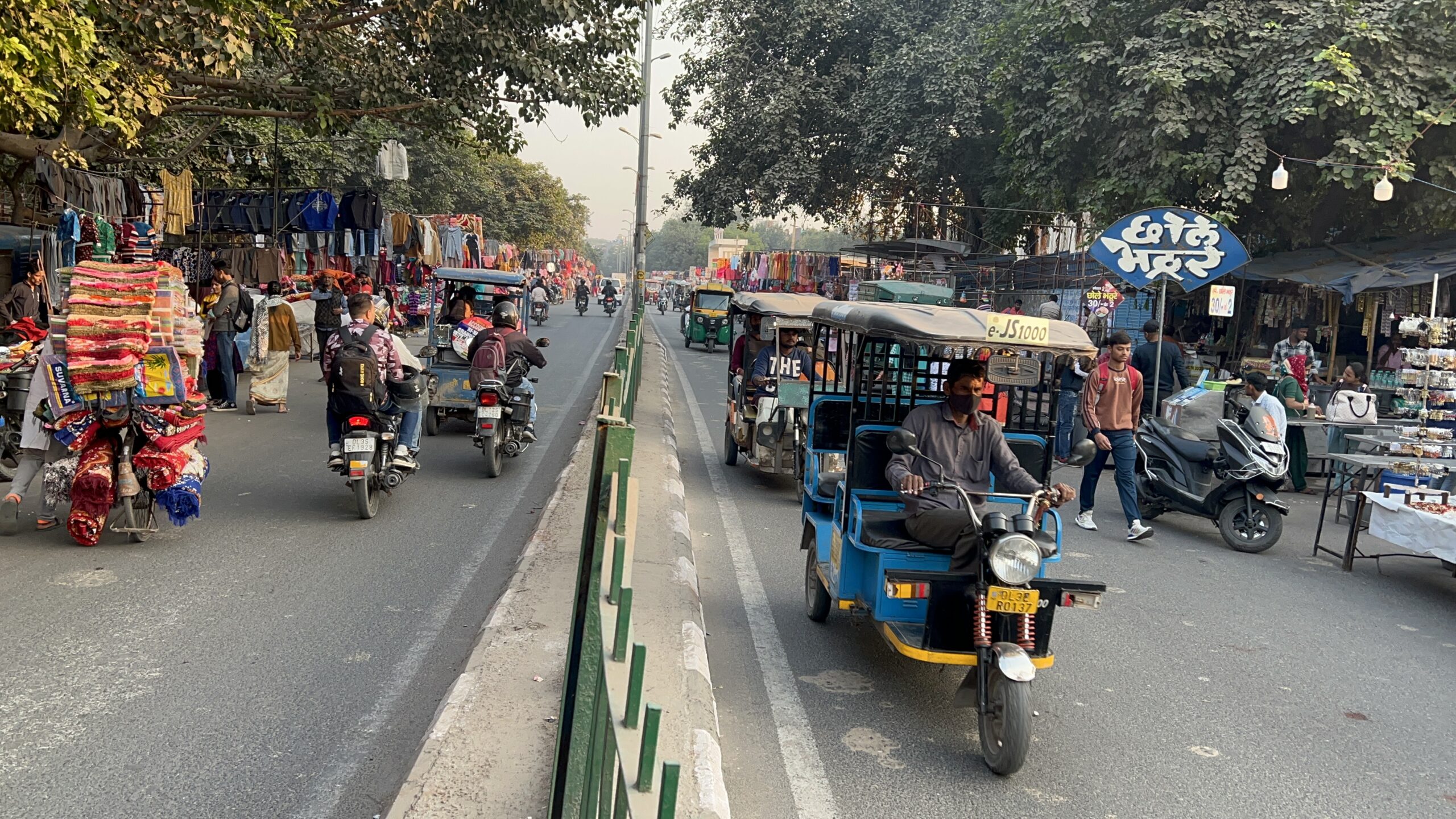मलिन मोहल्ले की यादें
Memories of a Tarnished Neighbourhood
मलिन मोहल्ले के बारे में लिखना हमारे लिए एक दिमाग़ी यात्रा है। एक स्मृति और इतिहास भी। यह इतिहास है मोहल्ले की तंग गलियों का और उसको आबाद करते लोगों का। यात्री हैं इसके किशोर लेखक-लेखिकाएँ जिन्होंने अपने बुज़ुर्ग़ समुदाय से बातचीत करके इसको दर्ज किया है। जाहिर है कि इन स्मृतियों में उन्होंने अपने अनुभवों को फेटा ही होगा।
Writing about our tarnished neighbourhoods is like stepping down memory lane. It is also however, a historical journey. It is writing about the history of our narrow lanes and the people who inhabit them. Those traversing these lanes are young writers who live here and have documented these stories after many conversations with the elders in their locality. Churned into these recorded memories are their own reflections and experiences.
जब भी हम अतीत या इतिहास कहते हैं तो सुनने वाले के ज़ेहन में बड़े नाम, बड़ेकाम और बड़े पोथे कौंध जाते हैं। हम अक्सर भूल जाते हैं कि इतिहास भी एक ख़ास तरह से लिखी हुई स्मृति ही है जिसे कुछ ख़ास पेशेवर लोगों ने अहम मानकर, एक ख़ास तरतीब देकर सँजो लिया है।
When we discuss history, readers immediately think of big names, serious research and astute manuscripts. We often forget that such a writing of history is also a careful documentation of memories which have been skillfully arranged and specifically placed in chronological order by professionals.
बड़ी कहानियों – महागाथाओं की भीड़ में हम ये भी भूल जाते हैं कि यह इतिहास रोज़ाना बनता है – सुर्ख़ियों में न सही, लोगों की बातचीत में, जो वे काम और आराम के वक़्त करते होते हैं। इसी सामूहिक बातचीत को दुहराते रहने से एक याददाश्त पैदा होती है जो न अख़बारी है, न क़िताबी और न ही किसी राष्ट्रीय- अंतर्राष्ट्रीय महत्त्व की। लेकिन यह स्मृति मोहल्ले के बाशिंदो के लिए अहम है और उनके दिमाग़ में महफ़ूज़ भी जो वक़्तन-फवक़्तन ज़रुरत के मुताबिक़ जी उठता है। हमने उन्हें बस कुरेदा-भर है।
Amidst this epic chronicling exercise, even we forget that history is also recorded everyday by ordinary people simply narrating their stories and life events during their work and leisure. It is in this manner that conversations in a community transform into memories. They have a unique dynamic and travel differently from national or global news and documentation. They are important for those who inhabit these localities and remain safely buried only to emerge when needed. Through these narratives we have scraped the crust away and brought the memories of our community to life.
प्रभात कुमार झा,
सितम्बर, 2023
Prabhat Kumar Jha,
September, 2023
सावदा घेवरा
Savda Ghevra
सावदा-घेवरा उत्तर-पश्चिमी दिल्ली के बाहरी इलाक़े में स्थित एक पुनर्वास कॉलोनी है। सरकार द्वारा सावदा और घेवरा के गॉंव वालों की ज़मीन अधिग्रहित की गई थी। दिल्ली के विभिन्न हिस्सों से ध्वस्त की गई मज़दूर-वर्ग की बस्तियों के निवासियों को 2006 से यहाँ बसाना शुरू किया गया था, जो कई सालों तक चला। इन मज़दूर परिवारों ने कई चुनैतियों का सामना किया। कई लोगों के हाथ से काम काज चला गया। कुछ लोगो को मीलों दूर अपने पुराने टूटे हुए घरों के पास काम करने जाना पड़ता था। इस वीरान जगह पर इन्होंने अपने घर बनाये जहाँ शुरू में न बिजली थी, न पानी, न स्कूल-कॉलेज और न ही डॉक्टर और अस्पताल ही। आज इतने सालों बाद, चहल पहल और जीवंतता से भरे इस कॉलोनी को देखकर कौन ये अनुमान लगा पाएगा कि इस मोहल्ले के बसने और बनने की कहानी कुछ इस तरह शुरू हुई थी। आइए देखते हैं, इस बस्ती के बसने की रूपरेखा।
Savda Ghevra is a resettlement colony located on the outskirts of North-West Delhi. Land was acquired from the villagers of Sawda and Ghevra, and inhabitants of demolished working-class settlements from across different parts of Delhi were resettled here across many years starting from 2006. The working-class families faced many challenges when they first arrived here. Many people lost their livelihoods. Some chose to travel nearly 30 kms. to reach their worker places which were closer to their older homes. They built their homes in vacant plots where there was neither electricity, now water, neither schools and colleges, nor doctors or hospitals. Today, after so many years, as this colony overflows with life, who will be able to guess it’s beginnings. Come let us walk down the lanes of Savda.
Stories coming soon
खिचड़ीपुर
Khichripur
खिचड़ीपुर उत्तर-पूर्वी दिल्ली का बहुत ही प्रदूषित इलाक़ा है। कूड़ा की पहाड़ी, धोबीघाट के रसायन, राष्ट्रीय राजमार्ग से गुज़रती गाड़ियों का धुआँ और बन रही इमारतों का धूल-धक्कड़ मिलकर इस जगह को यहाँ के निवासियों के लिए ख़तरनाक जगह में तब्दील कर देता है। शहर के सबसे बड़े लैंडफ़िल के बगल में स्थित खिचड़ीपुर रहने के लिए एक जहरीली जगह है। प्रदूषण के कारण निवासियों को त्वचा संबंधी और अस्थमा की बिमारियाँ हो जाया करती हैं। यहाँ के रहवासियों को हमेशा चारों ओर फैली बदबू और ख़राब आबोहवा का सामना करना पड़ता है। हालात ये है कि शहरी नियोजन की वर्गवादी नीति के परिणामस्वरूप हाशिए पर पड़े और ग़रीब इलाक़ों में लैंडफिल देखने को मिलता है।
Khichripur is a poor neighbourhood in north-eastern Delhi that is widely known as the „most polluted“ neighbourhood in Delhi. Situated next to one of the city’s largest landfills and chemical factory, Khichripur is literally a toxic place to live in. Residents develop skin ailments and asthma due to the pollution, and have to live with bad smells wafting through the neighbourhood at all times. Many residents live without windows because of the awful smells. This means that women, who are already housebound, have to live in a suffocating environment. This situation is a direct result of a racist/classist policy of urban planning that installs chemical factories and landfills in marginalized, impoverished and low-caste neighbourhoods.
Stories coming soon
दक्षिणपुरी
Dakshinpuri
दक्षिणपुरी और अंबेडकर नगर में ज़्यादातर दलित परिवार रहते हैं।
इन्हें 1970 के दशक में पुनर्वास कॉलोनी के रूप में बसाया गया। यहाँ पर दिल्ली के अलग-अलग इलाक़ों के विस्थापित मज़दूर परिवारों को सर छुपाने को जगह मिली। इस कॉलोनी का नाम डॉ. बी.आर. अंबेडकर के नाम पर रखा गया है, जो भारतीय संविधान के निर्माता और दलित समुदाय और सामाजिक न्याय चाहने वाले लोगों के बीच एक प्रतीक की तरह मौजूद रहे हैं। यहाँ के बाशिंदों ने कैसे अपने मौजूदा बसेरे को यह शक्ल दिया, हम यहाँ पर ये देखेंगे।
Dakshinpuri, Ambedkar Nagar, is primarily a Dalit locality, which is a residential area developed in the 1970s as a resettlement colony, to accommodate families displaced from various informal working-class settlements across Delhi. It is named after Dr. B.R. Ambedkar, architect of the Indian Constitution and an icon amongst the Dalit community and people who want social justice. In this section of the ‘Ticketless Travellers’ we will meet the residents of this locality and hear about their stories, their joys and sorrows and what makes this colony ‘home’ for them.
Stories coming soon



